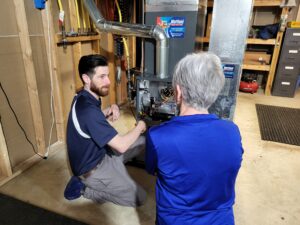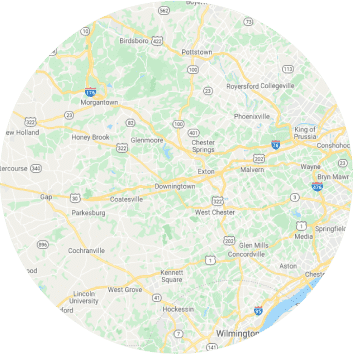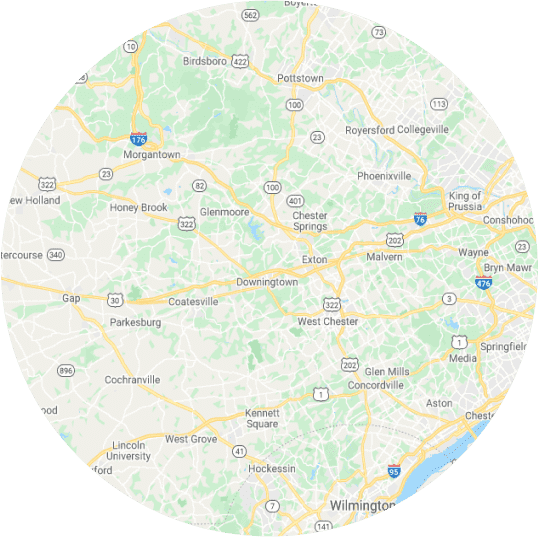7 Factors That Influence an HVAC System’s Installation Price

|
Getting your Trinity Audio player ready...
|
Read Time: 10 Mins. | Last Revised: April 18, 2024
Settling on a new HVAC system to install in your home can be overwhelming. Understanding the factors that influence HVAC replacement costs can help you narrow down your search.
Replacing your home’s heating and cooling systems isn’t something that you do every day; it’s an investment in the future of your home’s comfort that’s usually made once every 12 to 15 years.
That’s why taking the extra steps now to educate yourself is vital as it can prevent the potential disaster of installing a system that isn’t a good fit for you or your home.
Remember, an HVAC system installation requires much more scrutiny than other appliances like refrigerators or washing machines. Hooking up the wrong system is a situation that nobody wants to find themselves in.
Still, navigating this process on your own can be confusing or overwhelming when you begin to explore all the different options at your disposal. We don’t think it has to be so complicated.
That’s why we advocate identifying your own heating and cooling priorities early on before educating yourself on today’s heating and cooling systems.
We also believe that by understanding the factors that influence the cost of a new heating or cooling system, you’ll be able to clarify which aspects of an HVAC system are most important to you.
For decades, Mattioni’s HVAC professionals have been helping homeowners narrow down their HVAC replacement search based on their unique homes and priorities. We’re happy to share our industry knowledge with anyone looking for new HVAC equipment.
In this article, we’re going to shed some light on all the factors that, together, determine your HVAC system installation’s bottom-line price.
We’ve identified these seven factors as the most influential on the final price of installing a new system:
After reading this article, you’ll be able to identify and rank your personal heating or cooling priorities and begin to narrow down your search to a few systems that address those needs.
If you’re looking for specific pricing figures and details about air conditioners, heat pumps, or furnaces, check out these articles:
- How Much Does It Cost to Replace an Air Conditioner in 2024?
- How Much Does It Cost to Install a Heat Pump in 2024?
- How Much Does It Cost to Replace a Furnace in 2024?
Let’s kick things off by looking at the broadest system-type categories.
1. System Type & Equipment Matching
Regardless of if you’re searching for a heating or cooling solution, you’ll have several types of systems to choose from. The type of system you move forward with is the first and biggest piece of the pricing puzzle.
TYPES OF TEMPERATURE THROTTLING CAPABILITIES
Virtually all heating and cooling systems have the same three options when it comes to their capacity to throttle temperature outputs (measured in British Thermal Units and tonnage respectively):
- Single-stage units operate at either 100% capacity or not at all.
- Two-stage units have an added run stage at roughly 65% capacity.
- Variable-speed units can run at virtually any speed.
Performance, energy efficiency, and the installation price typically increase as you go from single-stage to two-stage to variable-speed. This is a decision that’ll impact your comfort and monthly utility bills once it’s installed.
EQUIPMENT MATCHING
Since air conditioners borrow your furnace’s blower motor, you’ll have to consider both systems during your replacement search. We call this equipment matching:
- Single-stage air conditioners are compatible with virtually any type of furnace.
- Two-stage air conditioners require a two-stage or variable-speed furnace.
- Variable-speed air conditioners are only compatible with variable-speed furnaces.
You can see how one of your HVAC systems can steer your replacement search for the other. In some situations, replacing both of your systems at the same time makes sense.
COOLING SYSTEM TYPES
Traditional central air conditioners tend to be the most common home cooling choice in the Greater Philadelphia Region. These systems include an outdoor unit that either sits on a concrete slab or hangs on the side of your house, and an indoor evaporator coil that’s connected to your furnace’s blower motor or an air handler.
Heat pumps and ductless mini splits have also emerged as viable alternatives to central air conditioning, largely because of their ability to double as an efficient heating system. While heat pumps and ductless mini split systems function similarly to air conditioners when in cooling mode, they utilize electric heating.
These electric options usually require an air handler installation instead of the evaporator coil and blower motor that an air conditioner normally utilize.
Heat pump and mini split systems are generally more expensive to install than central AC.
HEATING SYSTEM TYPES
Traditional heating options like furnaces and boilers utilize a few different fuel options, which can sway the bottom line of the installation up or down. Propane and natural gas furnaces and boilers tend to be a bit less expensive compared to oil.
Heat pumps and ductless mini splits, in addition to being a viable alternative to your cooling system, are also energy-efficient alternatives to furnaces and boilers. These systems will improve your savings on monthly utility bills, but will cost you more than a furnace or boiler to install.
DUAL FUEL SYSTEMS
Many homeowners opt for a combination of traditional and electric heating systems, both for added comfort and improved reliability. This is called a dual fuel, or hybrid, system and doesn’t depend on an air handler because it can access the furnace’s blower motor.
The total cost of a Dual Fuel System will depend on whether or not you have a furnace already installed, or if you will require a new one.
Our next two factors, system capacity and energy efficiency, also play vital roles in how your installation costs shape up.
2. Heating and/or Cooling Capacity Needs
Heating and cooling capacity refers to the amount of heat that a heating system can produce or that a cooling system can remove from a home.
We sometimes call heating and cooling capacities the “size” of the system, and in general, the greater the system’s size, the higher the cost of the system.
When it comes to determining the unique heating and cooling capacity needs of your home, the following factors all come into play:
- Square footage and insulation rating of your home
- The total number and efficiency of your windows and doors
- The number of people living in your home
- The direction that your home is facing
- The appliances in your home
- The color of your roof and exterior
- The interior layout of your home
As you can see, every home has unique heating and cooling capacity needs.
The size of your existing ductwork also plays a very important role in determining the appropriate size furnace for your home.
Ductwork that’s too narrow will not be able to facilitate the airflow from a system that might otherwise fit your home.
If your ductwork is too wide, it’ll need an oversized system that’ll hinder efficiency and the comfortability of your home.
Don’t hesitate to talk with your HVAC professional about your existing ductwork and how it impacts your new system options. Modifications to your ductwork are sometimes the best bet for solving this.
Matching your home with an appropriately sized HVAC system will maximize your home’s comfort, energy savings, and the longevity of the system.
3. Energy Efficiency of the System
The classification of a system as single-stage, two-stage, or variable-speed begins to indicate how well that system uses its fuel or electricity.
However, there are a few rating scales that do a better job of representing an HVAC system’s efficiency.
These are the SEER2 and AFUE ratings, for cooling and heating efficiencies respectively.
- The Seasonal Energy Efficiency Ratio, or SEER2, rating is from 13 to 26 and measures a cooling system’s efficiency under specific conditions.
- The Annual Fuel Utilization Efficiency, or AFUE, evaluates what percentage of a heating system’s fuel is converted into heat.
Here’s a closer look into what we view as low, average and high SEER2 efficiency ratings for cooling systems:
- A low-efficiency cooling system scores between a 13 - 14 SEER2 rating.
- An average-efficiency cooling system scores between a 14.1-17 SEER2 rating.
- A high-efficiency cooling system scores between a 17.1-26 SEER2.
With furnaces, the most notable segmentation of system efficiencies is between what are commonly called 80% AFUE and 90% AFUE furnaces.
You can think of these percentages less as a score or rating, and more as a measurement of how many cents of heat the system produces per dollar of fuel.
Unique features like a second heat exchanger and condensation drain play a role in increasing furnace efficiencies into the 90% range and beyond. Today, the most efficient furnaces available are 98% AFUE.
While a more energy-efficient system will save you money on monthly utility bills, in most cases, the higher a system’s AFUE or SEER2 rating, the higher the upfront installation price will be.
4. The Complexity of Installation & Ductwork Modifications Needed
While most HVAC installations are straightforward, there’s the potential for additional costs tied to the increased complexity of installing your new system.
Things like additional crew members, materials, modifications, accessibility, and added time are all factors that can increase the price of installation.
ACCESSIBILITY OF THE INSTALLATION, MODIFICATIONS & ADDITIONAL MATERIALS NEEDED
HVAC system installations sometimes require additional work such as:
- Removing infrastructure like crown molding to create enough access to the installation site.
- Disassembling the old and/or new equipment to allow it to be removed or brought into the installation site.
- Cutting holes through drywall or the exterior of your home to run lines or wiring.
- Hanging the outdoor AC unit on the side of the house if there is no space for it on the ground.
- Major duct modifications to physically fit the system or to handle the proper amount of airflow needed.
- Crawl space installations require installers to work while laying down.
ADDED MATERIALS
Your new heating or cooling system may require a new refrigerant line, wiring or ductwork for it to be installed properly.
The three factors impacting just how much the additional materials will raise the total installation cost are the type of material, the distance that needs to be spanned, and the difficulty of accessing that distance.
- Refrigerant line: The lines connecting your indoor and outdoor cooling units could span 75 feet or more.
- Wiring: Wiring may also need to span up to 75 feet or more.
- Ductwork: Modifications to the ductwork closest to your furnace may be needed, and in some cases a plenum or return drop may need to be added for the system to be installed properly.
Making the necessary considerations to provide a quality installation can increase the upfront price, however doing so will make sure that your system is set up for success and longevity, which will almost certainly save you on repair costs.
ATTIC INSTALLATIONS
If your heating or cooling systems will be housed in your attic, some potential factors could impact the logistics of the job:
- Ease of access: Lifting the system up a ladder and fitting it through a narrow opening.
- Workability: Walking on joists if there is no flooring can add to the complexity of the job.
- Temperature: Summer attic installations sometimes require additional manpower to allow the installers to rotate working as temperatures in the attic are usually over 125°F and can reach up to 160°F.
5. Accessories & Additional Systems
HVAC accessories like indoor air quality products and smart thermostats can enhance your home’s comfort and the accessibility of your heating and cooling systems. These additional investments add to the total cost of your HVAC installation.
Whole-House Dehumidifiers cost between $2,500 and $4,500 to install, depending on the size of your home, the amount of humidity that needs to be removed, and if the system will be ducted in, if it’s stand-alone or zoned for both.
Whole-House Humidifiers cost between $900 and $3,500 to install, depending on the size of your home.
Whole-House Air Scrubbers cost around $1,600 to install. If your home is large enough to call for two AC systems, we recommend getting two air scrubbers as well.
Whole-House Air Purifiers cost between $600 and $3,000 to install, depending on the type of air purifier and size of the system.
Energy Recovery Ventilation Systems (ERVs), also known as air intake systems, cost between $3,000 and $6,000 to install.
Smart Thermostats are sometimes required for variable-speed heat pumps. If you don’t have one already that is compatible with your system, they cost between $700 and $1,200 to install.
6. Geography
Like many other goods and services, your geographic location will also influence the price of installing a new heating or cooling system.
For instance, an HVAC installation in a large city like New York will be more expensive than in a small town. The socio-economic status of where you live plays a part in this as well, however these price differences aren’t easily measured.
Although this factor is out of your control, staying aware of it will give you a better idea of how much your installation should cost, and if you’re getting a good quote or not.
7. Quality of the Installation Company
Not all HVAC installation companies are created equal. The quality of the company providing your installation services, and how they train their installers, is going to affect the total cost of installing your new HVAC system.
It’s not uncommon for a less professional company that overlooks the details of a quality installation to offer lower prices. If you get an appealing quote from a service provider who lacks testimonials or pictures of previous work, it might be a red flag that you’re talking to a corner-cutter installer.
Poor installations often follow cheap prices, which has several negative consequences on your new system’s performance, efficiency, and longevity.
Conversely, an HVAC installation company that provides trained, licensed, and experienced installers will deliver a quality installation. It may come at a higher price, but a quality HVAC installation will set your new system up for optimal performance, efficiency, and longevity.
Considering how future repair costs and efficiency levels impact the long-term costs tied to your heat pump system helps to put the quality of installation into context.
Making Your Heating or Cooling System Installation Decision
As you can see, there are a lot of variables in play that influence the bottom-line costs of a heating or cooling system installation, and some of these factors are outside of your control entirely. Suffice it to say, no two installations are identical.
If you haven’t already, here is a sound approach to your heating or cooling system installation search.
- Rank your home heating and cooling priorities.
- Compare your priorities to the information covered in this article.
- Speak with an HVAC professional to narrow down your search to a few options.
Following these steps will help you start to sift through all the options available and narrow down your search to a small list of options suited for your home.
When it comes time to talk with an HVAC professional, be sure to ask all of your questions as understanding your options is the best way to make a sound decision for the future of your home.
Our HVAC professionals are ready to guide you through this important process. To speak with the Mattioni team about heating and cooling system pricing, call us at 610-400-8510 or schedule an appointment online today.






